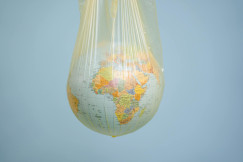Library and support resources
07 March 2025
CISUTAC's Vision for Circular EU Textiles
Library and support resources
07 March 2025
Regulation and public governance
Textile
Waste management, reuse and repair
Login / create an account to be able to react
-
20

The CISUTAC project has released a report proposing guidelines for Extended Producer Responsibility (EPR) to support the EU's transition to a circular economy. The report highlights EPR's role in reducing the environmental impact of textiles and promoting circular business models.
Topics
EU-27
Company with 250 or more employees
EU Institutions
International Organisations
National authorities
NGOs / Non-profits
SMEs (a company with less than 250 employees)
-
Transition Pathway's building blocks
-
-
Regulation and public governance
-
-
Industrial ecosystems
-
-
Textile
-
-
Textiles ecosystem areas
-
-
Waste management, reuse and repair
-
Share
Circular and Sustainable Textiles and Clothing (CISUTAC), a project dedicated to enhancing circularity and sustainability in textiles and clothing across Europe, has released a new report titled ‘CISUTAC Vision for a Circular and Sustainable EU Textile Sector: A European EPR that drives circularity’. This report proposes a set of guidelines for Extended Producer Responsibility (EPR) to support an EU-wide transition towards a circular economy.
The objective of EPR is to ensure that producers contribute to the costs of waste management and bear financial and organisational responsibility for the end-of-life phase of their products. EPR has been identified as a key element of CISUTAC's vision, as it could potentially reduce the environmental impact of textiles and promote circular business models.
Key topics covered in the report include:
• Establishment of EPR schemes tailored to widespread circularity
• Respect for the waste hierarchy
• Importance of incentivising eco-design for sustainable products
• Addressing the heterogeneity of textiles
• Development of shared responsibility and partnerships
• Ensuring uniform and effective compliance and enforcement
• Allowing sufficient time for proper implementation and stakeholder consultation
• Promoting more sustainable consumer behaviour
You can find the report attached below or consult it here.
Documents
Comments (0)
See also
Unlocking environmental gains through increased textile recycling
- Categories
- R&I, techniques and technological solutions Social dimension Sustainable competitiveness +13 more
Emotions and motivation: What drives people to repair their clothes?
- Categories
- Sustainable competitiveness Regulation and public governance Textile +9 more
The EU’s 2024 Industrial Report reveals green and digital pathways for textiles transformation
- Categories
- Infrastructure Investments and funding R&I, techniques and technological solutions +16 more




